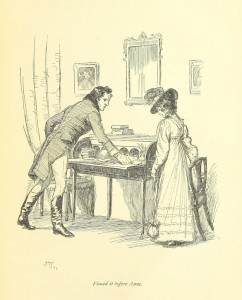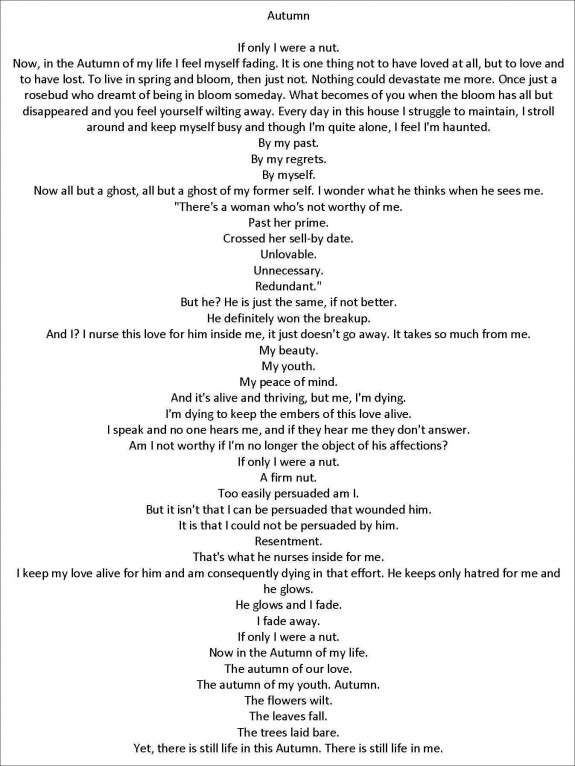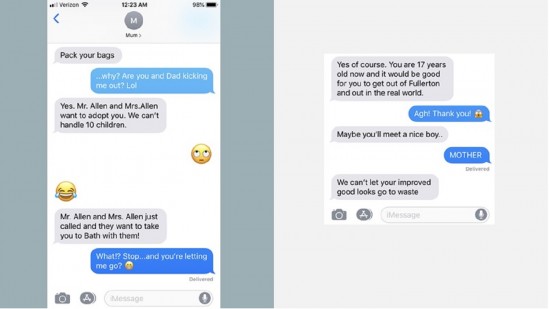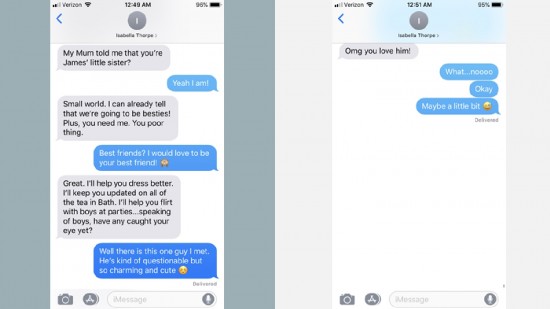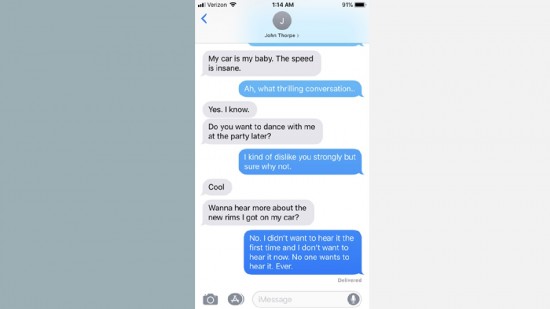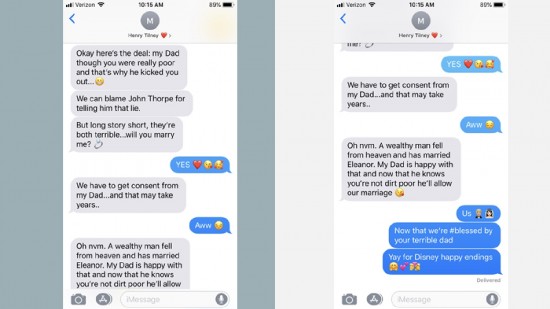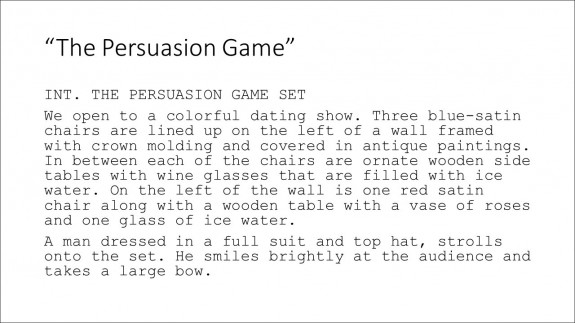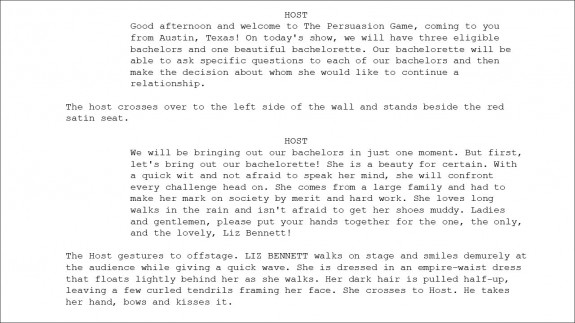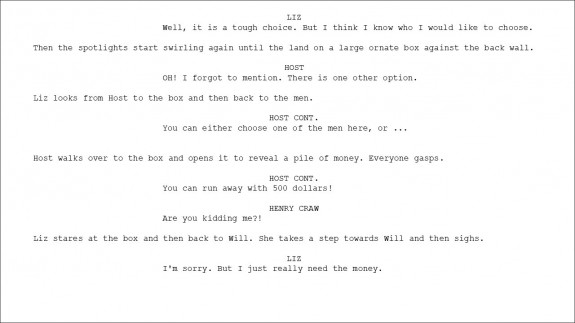I have taught Jane Austen’s novels in several courses during my thirty-year teaching career, and each time I have been surprised at how her reputation as a novelist and as a “celebrity” have evolved—from the film and television adaptation boom of the mid-1990s to the current torrent of Austen-inspired fiction and Etsy-type tchotchkes for sale both in gift shops and online. Whenever I teach a course devoted to Austen, I find that students are attracted to studying Austen for various reasons: their grandmother gave them their first Austen book; they saw the latest film or TV adaptation; they loved Lizzy Bennet’s Diaries. In almost every case, my students have not come to Austen by picking up the novel on their own; often they have been led to the novels through another medium. Therefore, in 2018, when I was scheduled to teach a “Major Authors” course for upper-division undergraduates and graduate students,1 I decided to begin the course with the current trends in Austen-inspired artistic endeavors. I wanted to join students immersed in popular culture and provide a vehicle through which they could “find” the hidden text of the real Jane Austen in the art and culture inspired by her novels.2
Although we spent most of the class doing the traditional reading of the novels and placing them in the context of Austen’s life and times, the constant re-focus on the current iterations of Austen-inspired art also helped us all to examine the novels more closely. In the process, I was led to re-think my concept of assessment for the course. If we were looking at Austen-inspired art in the popular culture, and if my students themselves were artists, why not give them an assignment that would foster that creativity and open them to reading her works more carefully in order to create their own art?
The first two papers the students wrote for the class were traditional assignments for a literature course: a close reading of a short passage and an analytical piece. For the final project, however, students were asked to prepare a creative project accompanied with an overview of the research they did to create the piece (a 3–4-page paper explaining their idea, the research they needed to do for the project, and an overview of the difficulties they faced).
The creative projects the students designed ranged from short stories and poetry to websites, regency food, a poster, a screenplay, a children’s book, a Dungeons and Dragons-type board game, and a re-writing of a novel via text messages. I was astounded at the quality and creativity of the work, and I was also reassured that the students were learning as much if not more from these projects as they would have from a traditional research-based term paper.
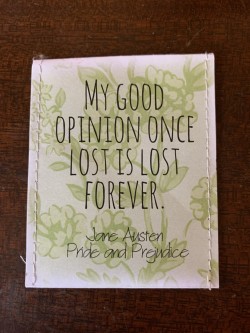 To get the students started exploring the various ways Jane Austen’s name and her words have inspired artistic products in the commercial sphere, we started the first class with tea. I brought in my hot pot, some disposable hot cups, and a box of handmade tea bags with Jane Austen quotations on them that I had purchased on Etsy. I asked each student to pick a quotation and come back the next week with a short report on what they could discover about it. Most of the students discovered that in some cases the quotations were the “thoughts” of Jane Austen but more often they were words spoken by flawed or even villainous characters or sometimes quotations from a film adaptation rather than from Austen’s novels. One example, “My good opinion once lost is lost forever,” is spoken by Mr. Darcy, when he banters with Elizabeth at Netherfield in Pride and Prejudice. Although Elizabeth is teasing Darcy about his vanity and pride, Darcy is increasingly serious and defensive about his own failings. This is the “bad” side of Mr. Darcy—the Mr. Darcy whom Elizabeth first rejects. But the quotation on the teabag is attributed to “Jane Austen” as if it were the author who is unable to forgive and forget. Reading this one quotation out of context, consumers of the hand-sewn teabags might assume that they are in sync with this beloved author. But the students learned, by tracing the various quotations they took home, that most of the “quotable” Austen misrepresents the major themes and messages within the novels.
To get the students started exploring the various ways Jane Austen’s name and her words have inspired artistic products in the commercial sphere, we started the first class with tea. I brought in my hot pot, some disposable hot cups, and a box of handmade tea bags with Jane Austen quotations on them that I had purchased on Etsy. I asked each student to pick a quotation and come back the next week with a short report on what they could discover about it. Most of the students discovered that in some cases the quotations were the “thoughts” of Jane Austen but more often they were words spoken by flawed or even villainous characters or sometimes quotations from a film adaptation rather than from Austen’s novels. One example, “My good opinion once lost is lost forever,” is spoken by Mr. Darcy, when he banters with Elizabeth at Netherfield in Pride and Prejudice. Although Elizabeth is teasing Darcy about his vanity and pride, Darcy is increasingly serious and defensive about his own failings. This is the “bad” side of Mr. Darcy—the Mr. Darcy whom Elizabeth first rejects. But the quotation on the teabag is attributed to “Jane Austen” as if it were the author who is unable to forgive and forget. Reading this one quotation out of context, consumers of the hand-sewn teabags might assume that they are in sync with this beloved author. But the students learned, by tracing the various quotations they took home, that most of the “quotable” Austen misrepresents the major themes and messages within the novels.
In another exercise, while we were studying Mansfield Park, I brought in “Jane Austen Playing Cards” that I had picked up in the emporium at a JASNA Annual General Meeting. We used the cards to learn how to play “Speculation,” as Austen describes the Bertrams doing on a visit to the parsonage in Mansfield Park. In addition to realizing how easy it is to learn the game, and how Austen’s use of it helped further characterize Lady Bertram as inept, by using the cards with illustrations from Victorian editions of the novels, the students had another opportunity to find the “real” Austen by comparing the illustrations to the text. The various illustrations came from all of the published novels. One student observed that Sense and Sensibility’s Mr. John Dashwood “was only important because he inherited and was a dude.”3 In another case, the illustration showed Captain Wentworth from Persuasion standing next to a writing desk with his hand on a piece of paper. What is missing from the illustration on the playing card is context: on the card Wentworth holds the proposal letter he has written to Anne; in the original illustration, we see that Wentworth is giving the letter to Anne. By cropping the illustration to fit the card, the creators have reduced what is arguably the most important scene in the novel—the elegant and emotional written proposal—and focused it on the figure of the hero.
With each of these exercises the students discovered that the misrepresentation or misappropriation of the text in the novels was the result of either purely commercial motives or naïve misreading. Many of the Austen-inspired household goods and gifts one can purchase in gift shops and online seem to be more inspired by film adaptations or other Austen-inspired goods, and some of the creators seem not to be familiar with the actual novels. As the students progressed through the semester’s reading, they became increasingly aware of this issue. As they prepared to create their own art, then, they were hyper-vigilant in re-reading the novels inspiring their work and in honoring the original text.
As Jane Austen’s works and persona continue to be re-interpreted through various media, instructors of every level might find it helpful to use that media to reach an audience of students who grew up with instant Google searches and YouTube videos. It is not uncommon for a literature course to include various film adaptations, but it is unusual, I believe, for literature teachers to encourage students to engage in their own adaptation processes.4 I have found it to be an invaluable teaching tool. Encouraging students to engage in multimedia projects can help them better understand the novels themselves and the dangers of the misappropriation. In order to appreciate the outcome of the projects, therefore, I provide a sampling of some of the pieces that the students in my class created.
Traditional creative writing
Mavlica Sawhney was inspired by Persuasion’s Anne Elliot as she wanders the countryside on an autumn day, recalling verses about the somber season. Sawhney wrote a visual poem from Anne’s point of view. She intended for the arrangements of the lines to form an autumn leaf.
Sawhney reads the scene carefully, referring to Anne’s overhearing Wentworth talk about the hazelnut to Louisa, regretting the “bloom” she has lost, the persuasion that caused her to be separated from Wentworth, and her realization that she still has some life left to live. Although Sawhney updates the language, achieving a contemporary tone, she captures Anne’s mood and foreshadows the denouement of the story.
In another traditional kind of adaptation, Natalia Sanchez expands Margaret Dashwood’s character and, for a short story, invents a future for her after Sense and Sensibility. In the second week of the course, the students attended a stage adaptation of Sense and Sensibility in which Margaret’s character was enhanced, and Sanchez said that she had been inspired by the play: “I loved watching her on stage and seeing someone act her out while in the book she’s not actually there,” she told Karina Melendez Trejo. “I wanted to write her.” Sanchez’s story imagines Mrs. Jennings coercing Margaret to enter the marriage market in London:
Mrs. Jennings was once again arrived at Barton. Margaret could hear as much from upstairs. She had been hiding from Mrs. Jennings on account that as she had successfully seen the marriage of her daughters and of the two elder Dashwood sisters—though not entirely in her prediction. As Margaret had come of age, the Season awaited her. And with it, the persuasions of Mrs. Jennings for Margaret to go to London with her.
Margaret is at first reluctant to go since she is annoyed with Mrs. Jennings’s aggressive stance, but Mrs. Jennings is eventually successful in enticing Margaret to accompany her to London, and after a few false turns, Margaret does find her true love:
A clearing of a throat led Margaret to tum from her new acquaintance to a man goodlooking and gentleman-like. Though soft spoken, he had a pleasing countenance and easy manners. He held out a hand with the question of a dance floating in the air between them. After a moment’s hesitation, she placed her hand in his and was led into a dance.
Although this is a short excerpt from a longer, more complicated plot line, in her accompanying analysis Sanchez expressed how much she needed to study the Austen prose to properly emulate it and how much she learned about her own writing in the process.
A novel in text messages
Rather than extending one of Austen’s novels, Karina Melendez Trejo condensed and updated Northanger Abbey into a series of text messages between Catherine Morland and other characters in the novel, which she formulated into a PowerPoint presentation for the class. “I liked the multimodal form of texting,” Trejo told Natalia Sanchez, “since it is our main form of communication that we use today.” Trejo identified the main plot points and then figured out how the texting should flow (Sanchez and Trejo). The selected slides linked below give a sample of the project. This first slide is a conversation between Catherine and her mother:
Trejo is careful to capture contemporary language—“Mum” for Mother, “What? Stop. . . and you’re letting me go?”—as well as to include the emojis a fifteen-year-old might think necessary. Besides paying attention to language that was “relevant and trendy” at the time, she also incorporated popular cultural references, such as Ariane Grande’s (then new) song “Thank U, Next” (Sanchez and Trejo). The second slide is a sample of a conversation between Catherine and Isabella:
In the first text message between the two, Trejo uses the term “besties” and includes more emojis. Isabella lists the interest in fashion and flirting that she displays in the novel. Trejo also created a Twitter account for Catherine, “where she tweets about different gothic novels and her excitement at going to the Tilneys, which I feel like is so accurate for a coming-of-age gothic story” (Sanchez and Trejo). Isabella’s brother John is also conveyed through his texting:
John’s carriage and horses have, of course, been converted to his car, which is all he can talk about. But in this case, Trejo gives Catherine the courage to write in a text message what the character in the novel cannot say aloud—that she dislikes John. He does not, however, seem to notice. He is more interested in his rims.
There are thirty-one slides in the presentation, as Catherine converses with Mrs. Allen, General Tilney, James Morland, Eleanor Tilney, and Henry Tilney. In the final slide, Henry proposes by text message:
When Henry explains the reason for her hasty departure from Northanger Abbey, he also proposes with an engagement ring emoji. He is quick to qualify his proposal with “We have to get consent from my Dad . . . and that may take years” but almost immediately types “nvm” (“never mind” in text lingo), explaining Eleanor’s sudden engagement that has made way for the marriage.5
A children’s pop-up book
Northanger Abbey was also tackled by Jasmine Serna whose ten-year-old sister wanted to read the novel but found it above her reading level. Serna created the pop-up book for her, choosing still shots that she found online from the 2008 BBC adaptation and adding moving carriages, bejeweled headdresses, and hand-written text to accompany the three-dimensional images. To indicate Catherine’s arrival in Bath, the carriage moves across the page, and we then see Henry and Catherine preparing to dance. On the following page, Catherine meets her new “bestie,” Isabella Thorpe.
Serna juxtaposes period-dressed still shots from the film with contemporary lingo, using hashtags (#bestie, #bestfriends) that modern girls might use in their social media, along with silhouettes of modern couples doing ballroom dancing and modern women shopping. Of course, she must include the John Thorpe abduction:
Again, Serna incorporates a potential social media post (#we’recrazy) along with the stills from the film adaptation in period-specific garb. When Catherine visits Northanger Abbey and is sent home, the carriage reappears and continues its left-to-right movement. The directive “just go” is uttered by General Tilney, and the photo of Catherine reveals her dejection. But eventually, of course, the marriage happens:
On each page, along with the photos and embellishments, Serna handwrites Austen’s words, ending with the lines, “She was assured of his affection, and that heart in turn was solicited, which perhaps, they pretty equally already knew was entirely already his own.” Although Serna’s book updates some of the images, the language remains Austen’s. Since the book is not much longer than the excerpts shown here, it was difficult for Serna to choose the most important elements to include. As with the other students’ projects, she had to read the book several times to do it justice in her adapted pop-up book.
A game-show screenplay
The final creative piece I would like to highlight is again a written piece, but this time it is in a modern genre—a screenplay. Sierra Ellison described “The Persuasion Game,” her screenplay adaptation, starring Liz Bennett as the bachelorette on a game show as “a kind of comment on what people think Jane Austen novels are about and on female and male roles in almost a satiric manner.” Typed in screenplay format, Ellison’s project includes detail about the set, describes each participant, and sets up the rules of the game:
Ellison (as well as her audience) enjoyed adapting Austen’s characters, the bachelors Will Darcy, Henry Craw, and Brandon Cornell, “using caricatures of who they are as contestants on a dating show” (Ellison). After each of the bachelors has his turn answering Liz’s questions, Liz seems to be inclined toward choosing Will, when the host tells her she has an additional option—a cash prize:
Ellison’s “The Persuasion Game,” though it follows the character descriptions of Austen’s novels, is a modern game with a modern woman who does not need to marry to make her way in the world. The promise here is that Liz not only can chose whomever she wants but can also earn her own money.6
Creative assignments in literature classrooms
Although I was at first reluctant to assign creative projects in a traditional literature course, the students reported that the creative pieces were often more difficult to research than the traditional term paper, since they had to read the novels much more carefully to do justice to the original. This assignment was such a success7 that since teaching this class in 2018, I have included this kind of creative option for most of my literature courses—in both the undergraduate and graduate programs—and have found that students engage more fully when they are inspired by a classic work of literature and when they need to describe their creative processes. Ultimately, I have learned that creating art inspired by Austen’s novels does not need to be reductive if the artists are careful to read closely and think critically about the source texts as well as about the modern audience they aim to reach.
NOTES
1We have a rather unique master’s program at Chapman University where I teach: a traditional Master of Arts degree in English literature, a Master of Fine Arts in Creative writing, and a dual degree program, in which students can earn both degrees simultaneously. Many of the students in our literature courses at all levels are also pursuing Creative Writing degrees.
2For a thorough discussion of the course and its structure, please see my essay in Texas Studies in Literature and Language.
3For a longer description of this exercise, see “Flipping the Austen Classroom” (425).
4For a teaching strategy that builds on students’ engagement with film and video adaptations as well as fan fiction, see Amanda Gilroy’s 2010 essay.
5To view a short video of Natalia Sanchez and Karina Melendez Trejo discussing their creative projects, use this YouTube link: https://youtu.be/R-HCPubQfVE.
6To view a short video of Sierra Ellison talking about her creative project, use this YouTube link: https://youtu.be/0GMRMUjDvuk.
7Ellison remarked that it is “an awesome assignment that I actually respect more now that I’m a teacher.”
